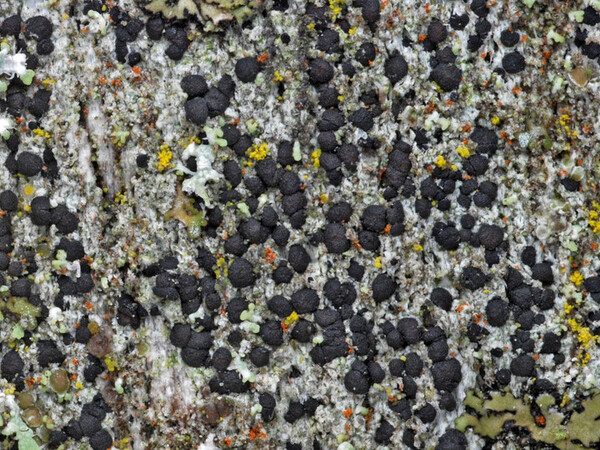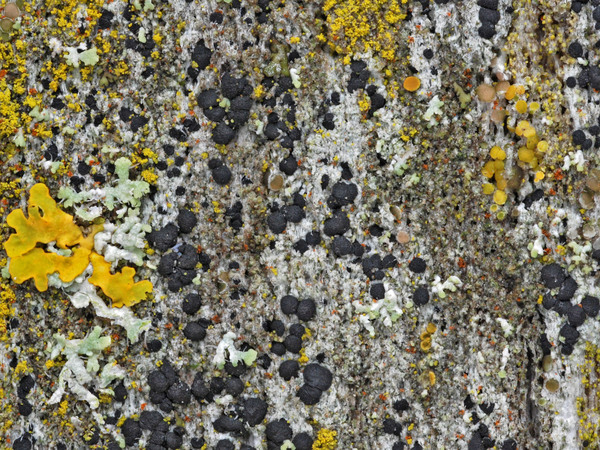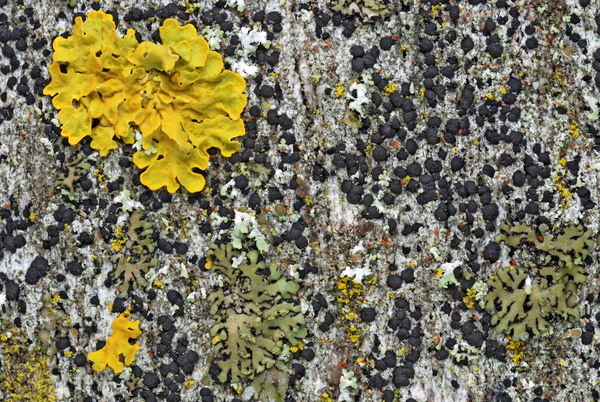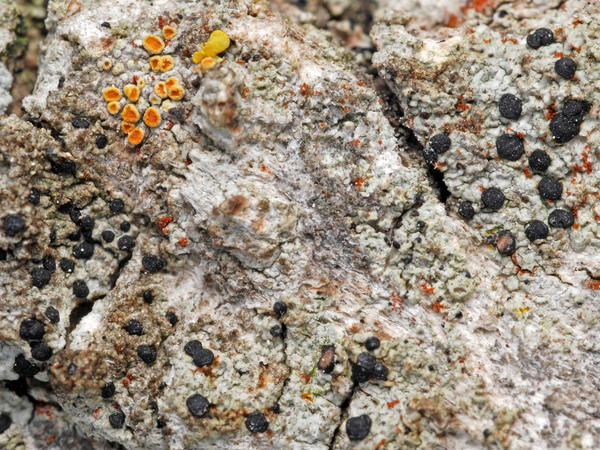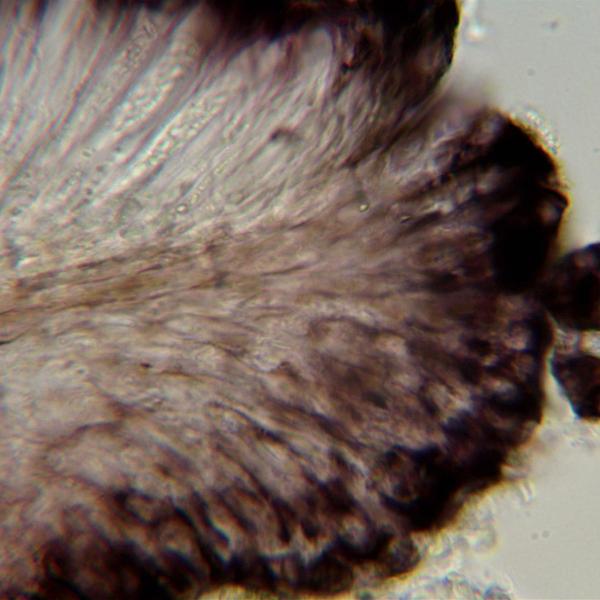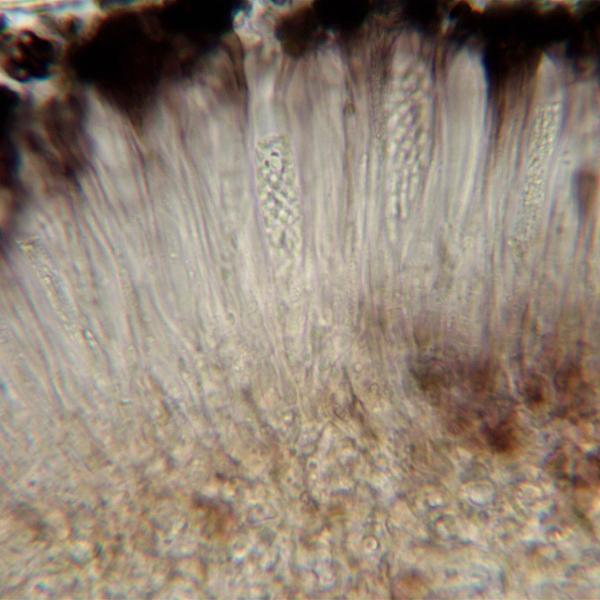Bibbya vermifera (Nyl.) Kistenich, Timdal, Bendiksby & S.Ekman
Taxon, 67: 892, 2018.. Basionym: Lecidea vermifera Nyl. - Bot. Not.: 98, 1853.
Synonyms: Bacidia hegetschweileri auct. non (Hepp) Vain.; Bacidia vermifera (Nyl.) Th. Fr.; Biatora atrosanguinea f. hegetschweileri auct. non Hepp; Bilimbia lecideoides (Hazsl. ex Körb.) Th. Fr.; Scoliciosporum vermiferum (Nyl.) Arnold
Distribution: N - TAA (Nascimbene & al. 2007b), Lomb, Piem (Isocrono & al. 2004).
Description: Thallus crustose, continuous, rimose-areolate, or warted-areolate, white to grey or brown-grey, sometimes poorly evident. Apothecia lecideine, black to rarely dark brown-black, 0.2-0.5 mm across, with a persistently flat to slightly convex, epruinose disc, and a distinct, persistent or rarely finally excluded, concolorous proper margin. Proper exciple 26-45 μm wide laterally, without crystals, the outer rim black-brown or dark red-brown (sometimes paler in lower part), K+ purple-red, without a layer of enlarged cells, the medullary part colourless or very pale brown; epithecium purple-brown to dark brown, scarcely differentiated from hymenium, K+ intensifying purple; hymenium (35-)45-50(-70) μm high, colourless except for occasional vertical brown streaks; paraphyses mostly simple, 1-1.5(-2) μm thick at mid-level, the apical cells clavate, 3.5-4(-6) μm wide; hypothecium colourless or very pale brown; all pigmented parts of apothecia N+ orange-red. Asci 8-spored, clavate, the apical dome K/I+ dark blue with a pale, conical-pointed apical cushion (axial mass), the wall I-, but the thin outer gel I+ blue, Bacidia-type. Ascospores 3-7-septate, hyaline, bacilliform or clavate, usually strongly curved or sigmoid, rarely almost straight, coiled in the asci, (14-)16-35(-40) x 2-3(-4) μm. Pycnidia half-immersed, black, the wall K+ brown-purple. Conidia 1-celled, hyaline, of two types: a) ellipsoid or short-bacilliform, 2.8-3.6 x 1.2-1.6 μm, b) bacilliform, straight or slightly curved, 6-9 x 0.5-0.8 μm. Photobiont chlorococcoid, the cells 5-14 μm in diam. Spot tests: thallus K-, C-, KC-, P-, UV-. Chemistry: thallus without lichen substances; apothecia and pycnidial walls with the Laurocerasi-brown pigment. Note: on the bark of broad-leaved trees in rather humid situations, more rarely on lignum. For nomenclatural problems see Ekman (1996). It was included as “Regionally Extinct” in the Italian red list of epiphytic lichens (Nascimbene & al. 2013c).
Growth form: Crustose
Substrata: bark
Photobiont: green algae other than Trentepohlia
Reproductive strategy: mainly sexual
Commonnes-rarity: (info)
Alpine belt: absent
Subalpine belt: very rare
Oromediterranean belt: absent
Montane belt: very rare
Submediterranean belt: absent
Padanian area: absent
Humid submediterranean belt: absent
Humid mediterranean belt: absent
Dry mediterranean belt: absent

Predictive model
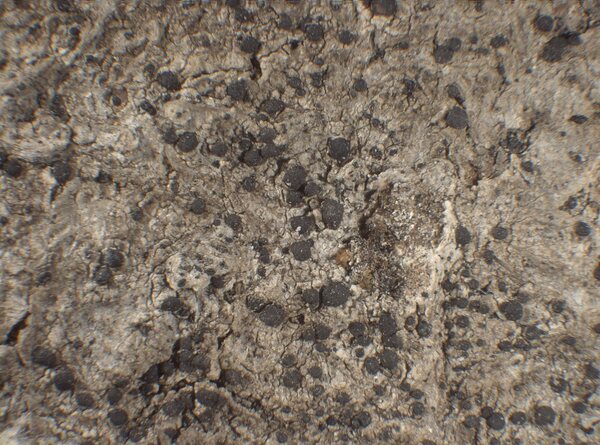

E. Pittao; Owner: Department of Life Sciences, University of Trieste
Herbarium: TSB (28078)
2008.03.31
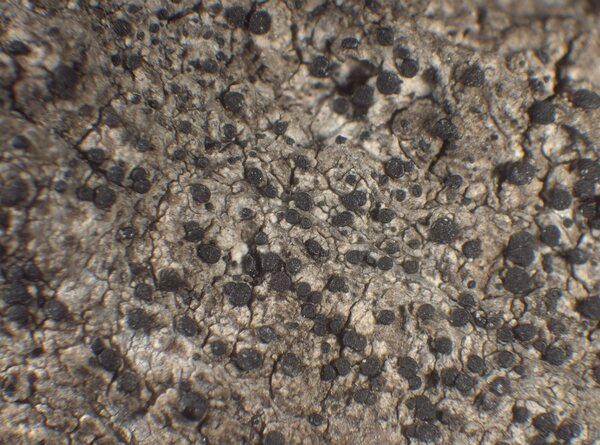

E. Pittao; Owner: Department of Life Sciences, University of Trieste
Herbarium: TSB (28078)
2008.03.31


E. Pittao; Owner: Department of Life Sciences, University of Trieste
Herbarium: TSB (28078)
2008.03.31
Growth form: Crustose
Substrata: bark
Photobiont: green algae other than Trentepohlia
Reproductive strategy: mainly sexual
Commonnes-rarity: (info)
Alpine belt: absent
Subalpine belt: very rare
Oromediterranean belt: absent
Montane belt: very rare
Submediterranean belt: absent
Padanian area: absent
Humid submediterranean belt: absent
Humid mediterranean belt: absent
Dry mediterranean belt: absent

Predictive model


E. Pittao; Owner: Department of Life Sciences, University of Trieste
Herbarium: TSB (28078)
2008.03.31


E. Pittao; Owner: Department of Life Sciences, University of Trieste
Herbarium: TSB (28078)
2008.03.31


 INDEX FUNGORUM
INDEX FUNGORUM
 GBIF
GBIF
 DOLICHENS
DOLICHENS
